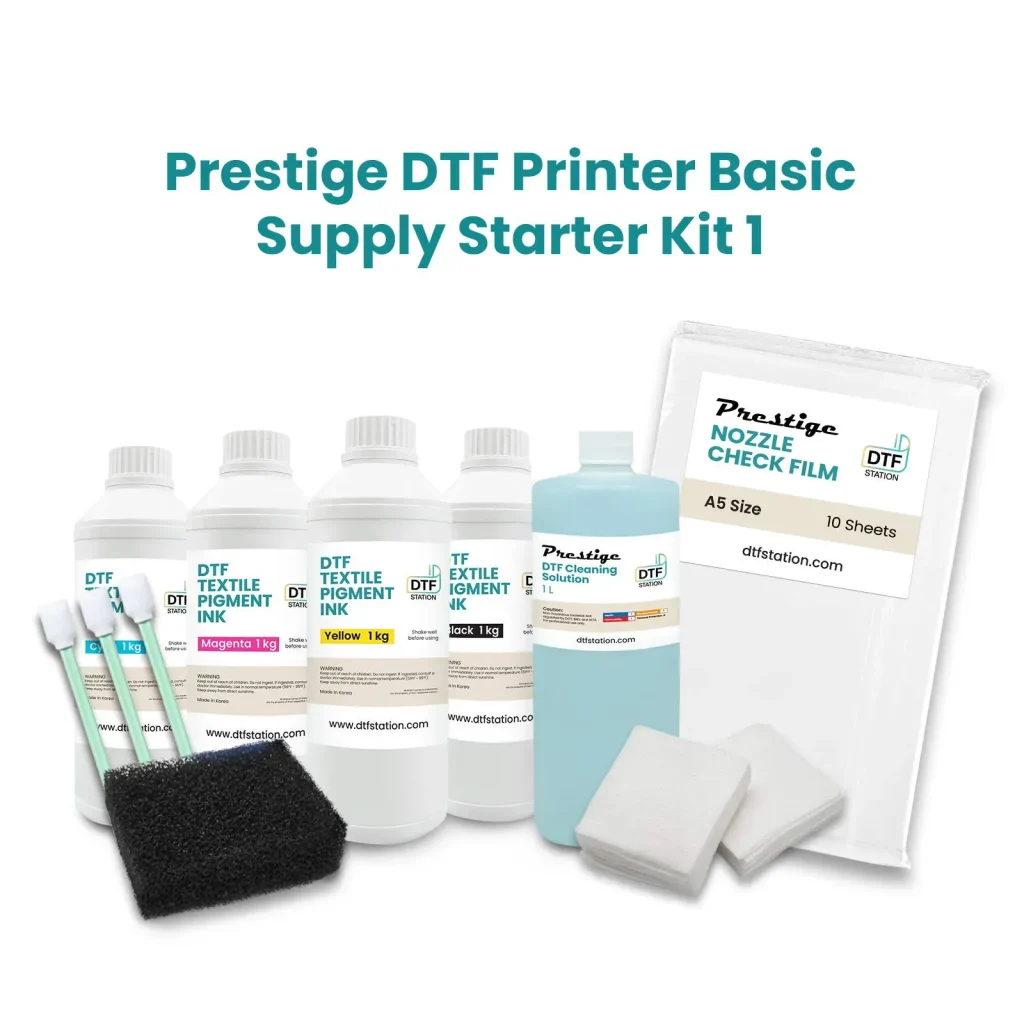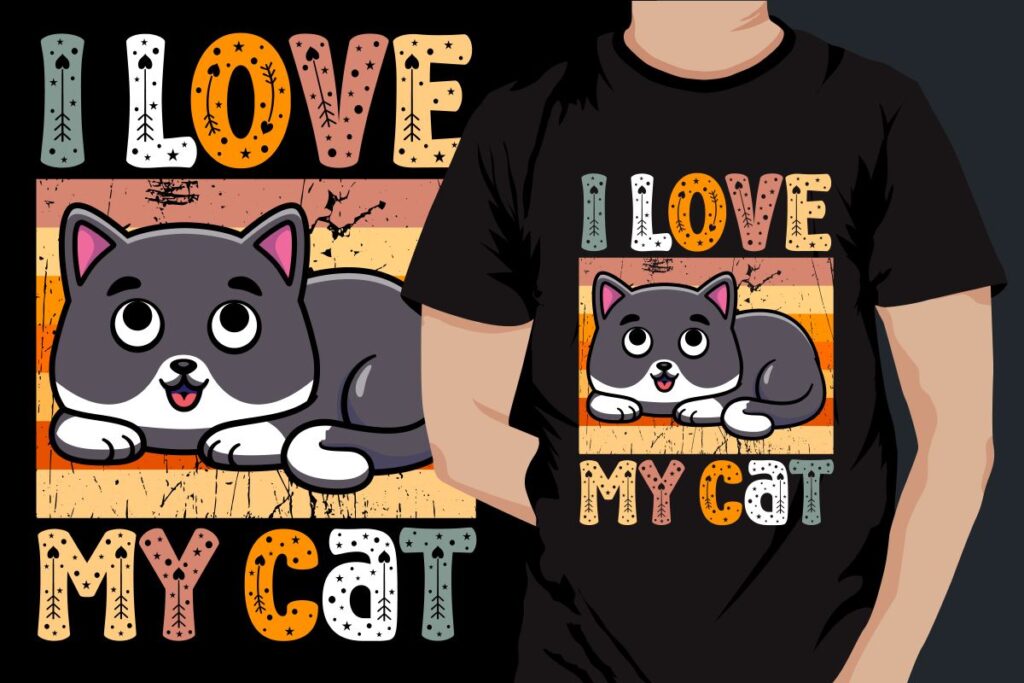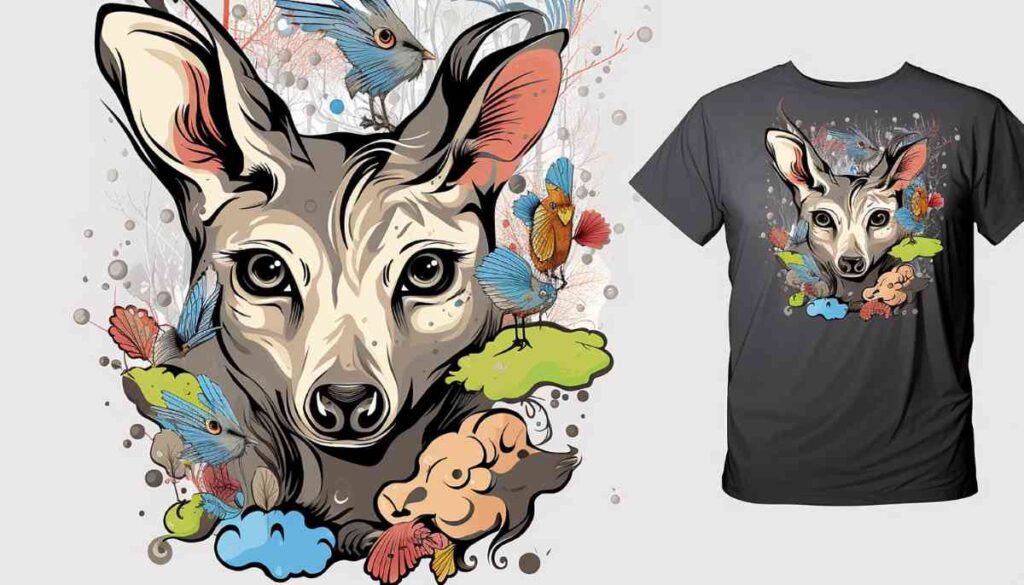DTF Supplies play a crucial role in the transformative world of Direct-to-Film (DTF) printing, a method that is rapidly gaining popularity among both businesses and creative enthusiasts. This cutting-edge technology enables users to achieve vibrant and intricate designs on a variety of fabrics, making it an ideal choice for custom garments and promotional items. To ensure high-quality outcomes, investing in the right DTF supplies, including specialized DTF printers, transfer films, and hot melt adhesives, is essential. Using a heat press machine effectively helps seal the designs onto materials, resulting in durable and stunning prints. As we delve into the essential components of DTF printing, you’ll discover how the right tools can elevate your projects to new heights.
In the realm of textile graphics, Direct-to-Film printing has emerged as a revolutionary technique that simplifies the process of transferring elaborate designs onto fabric. By utilizing specialized printing supplies, including transfer sheets and adhesive powders, creators can easily bring their artistic vision to life. This method not only promotes versatility across various fabric types but also ensures that prints maintain their quality over time. Understanding the significance of each product, from high-quality printing machines to efficient heat application tools, is vital for achieving optimal results. In this overview, we will outline the essential materials needed for successful DTF applications, empowering you to harness the full potential of this innovative printing method.
Understanding the Basics of DTF Printing
DTF printing, or Direct-to-Film printing, represents a revolutionary step in the printing technology landscape. This technique allows users to print intricate designs on a film, which can then be successfully transferred to a variety of fabric types with the application of heat and pressure. The versatility of DTF printing makes it suitable for an extensive range of materials such as cotton, polyester, and blends, which significantly widens the spectrum of potential applications, from custom apparel to promotional products.
One of the standout features of DTF printing is its capacity for producing high-quality, vibrant prints that maintain their integrity over time. Utilizing specialized inks and transfer films calibrated for this unique process, the printed designs can withstand numerous washes without fading or losing their original glory. This durability appeals to both businesses needing reliable outputs as well as DIY enthusiasts looking for long-lasting results.
Essential Components of DTF Printing Supplies
To embark on a successful DTF printing journey, understanding the essential supplies is crucial. At the core are DTF printers, which are specifically designed to use high-quality inks that comply with the unique requirements of DTF printing. These printers, commonly from brands like Epson and Brother, deliver high-resolution outputs that capture the intricacies of even the most detailed designs. Choosing the right printer can significantly enhance your output quality and overall satisfaction with the process.
In addition to printers, DTF transfer films play a pivotal role in achieving successful designs. Opting for high-quality films ensures proper adhesion to various fabrics, arguably making it one of the most critical parts of the setup. Considerations including thickness and compatibility with the inks being utilized can influence the final product’s appearance and durability, resulting in prints that both look good and last long.
The Role of Hot Melt Adhesive in DTF Printing
Hot melt adhesive is an indispensable part of the DTF printing process, acting as the glue that affixes your transferred images to fabric. This powder is sprinkled onto the printed design on the film and requires heat to activate its bonding qualities. By ensuring that your adhesive is of high quality, you can significantly boost the longevity and appearance of your final prints. Poor-quality adhesive might lead to peeling or crumbling designs after washing, which ultimately defeats the purpose of investing in a premium printing process.
Beyond just bonding, the right hot melt adhesive also contributes to the flexibility and feel of the finished product. It’s essential to match the adhesive type with the specific types of fabric you’re working with. This ensures that your design not only sticks but does so in a way that withstands everyday wear and tear, keeping your creations looking vibrant and intact through multiple uses and washes.
Selecting the Best Heat Press for DTF Projects
A quality heat press machine is vital for successful DTF printing outcomes. This equipment allows users to apply the correct amount of heat and pressure necessary to transfer designs from the film to the garment effectively. When selecting a heat press, it’s important to choose one that offers adjustable pressure and temperature settings, providing the flexibility needed for various fabric types and thicknesses.
Additionally, even heat distribution is critical; uneven heating can lead to faulty transfers or inadequate adhesion, resulting in designs that may lift or fade quickly. Investing in sturdy, reliable heat press equipment ensures that your prints come out consistently well, making it a key component for anyone serious about DTF printing.
Why DTF Supplies Matter for Quality Prints
Choosing the right DTF supplies is paramount for achieving prints that not only look professional but also endure the test of time. When your materials — from inks to transfer films — align with industry standards, you can expect to deliver high-quality outputs that satisfy your customer’s demands. For businesses, this means building a strong reputation and fostering customer loyalty through consistent quality.
Furthermore, the interoperability of your supplies can affect the overall workflow. For instance, using compatible inks, films, and printers reduces the likelihood of printer malfunctions or poor transfer quality. Prioritizing quality DTF supplies can result in a smoother printing process, ultimately translating to greater efficiency and profitability.
Industry Trends to Watch in DTF Printing
As DTF printing continues to gain momentum, several trends are shaping the future of this printing method. One significant trend is the increasing demand for sustainable printing practices. Eco-friendly inks and biodegradable transfer films are becoming more popular among consumers who favor environmentally responsible choices in their products. Companies integrating sustainability into their production processes can not only attract more customers but also make a positive impact on the environment.
Another trend is the automation of DTF printing processes. As businesses strive for efficiency, automated systems are being incorporated to streamline operations and reduce labor costs. The integration of technology allows for faster output times and improved production consistency — key factors in staying competitive within the marketplace. Adopting such advancements alongside toolkits from trusted suppliers could ensure your operations remain ahead of the curve.
Frequently Asked Questions
What are the essential DTF supplies for successful printing?
To achieve outstanding results with DTF printing, it’s crucial to have the right supplies: a quality DTF printer equipped with specialized DTF inks, high-grade DTF transfer films, hot melt adhesive powder, an efficient heat press machine, and protective gear for safety. Each of these components plays a vital role in producing vibrant and long-lasting prints.
How do DTF transfer films affect print quality?
DTF transfer films are a key supply in DTF printing that can highly influence the overall print quality. High-quality transfer films ensure good adhesion to the fabric and work effectively with the DTF inks, leading to vibrant designs that withstand washing and wear over time.
What role does hot melt adhesive play in DTF printing?
Hot melt adhesive powder is essential in DTF printing as it helps in bonding the printed design from the transfer film to the fabric. Choosing the right adhesive is crucial, as it impacts the longevity and appearance of the final printed product, ensuring that the design lasts through multiple washes.
Why are DTF printers important for printing jobs?
DTF printers are specifically designed to work with DTF inks and transfer films, providing high-resolution output necessary for vibrant, detailed designs. Using a dedicated DTF printer ensures compatibility with the materials, producing prints with excellent durability and wash resistance.
What features should I look for in a heat press machine for DTF printing?
When selecting a heat press machine for DTF printing, look for features such as adjustable pressure and temperature settings, even heat distribution, and a reliable heat source. These attributes ensure that your designs transfer correctly onto fabric, enhancing the quality of your prints.
How can protective equipment enhance safety in DTF printing?
Using protective equipment, such as gloves and masks, is crucial when working with DTF inks and hot melt adhesive powders. These supplies help minimize exposure to potentially harmful substances, creating a safe working environment and allowing users to focus on producing high-quality prints.
| Key Point | Description |
|---|---|
| DTF Printing | A method of printing designs onto a special film that adheres to fabrics using heat. |
| Versatility | Can print on various fabric types for intricate designs. |
| Cost-Effective | More economical than traditional screen printing, especially for smaller runs. |
| Durability | Produces prints that can withstand multiple washes without fading. |
| Ease of Use | Accessible to users of all skill levels with proper supplies. |
| Essential Supplies | Includes DTF printers, transfer films, adhesive powders, heat press machines, and inks. |
| Trending for 2025 | Focus on sustainability, automation, and training resources in DTF printing. |
| Tips for Success | Test designs, maintain equipment, and experiment with different supplies. |
Summary
DTF Supplies are essential for anyone looking to leverage the benefits of Direct-to-Film printing. This technology has revolutionized the printing industry, offering vibrant designs and durability on various fabrics, making it suitable for both professional and personal projects. To create outstanding custom apparel and promotional items, it is important to invest in high-quality supplies such as printers, transfer films, adhesive powders, and heat press machines. Additionally, staying informed about industry trends such as sustainability and automation can help businesses maintain a competitive edge. With the right tools and knowledge, anyone can master the art of DTF printing, delivering exceptional products that meet market demands.



